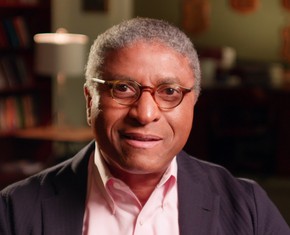The views expressed in our content reflect individual perspectives and do not represent the authoritative views of the Baha'i Faith.
If you believe in one God, then you’re a monotheist—but what kind are you?
In his “Notes for a Typology of Monotheism” (1957, in Italian), the renowned Italian Islamicist Alessandro Bausani introduces and explains his concept of primary and secondary monotheisms.
In the first essay in this short series, we learned that “primary monotheisms” (Judaism and Islam) were born in a polytheistic milieu (which Bausani calls “pagan naturalism”). “Secondary monotheisms” (Christianity and the Baha’i Faith) each arose in a monotheistic milieu.

Therefore, according to Bausani, historically Judaism and Islam were more aggressive in spreading their Faith, since they each had to fight against the prevailing idolatrous societies. Judaism and Islam, moreover, each initially emphasized the divine attributes of the tremenda majestas (the tendency to provoke fear or aweful majesty). Secondary monotheisms (Christianity and the Baha’i Faith), generally speaking, were less aggressive and stressed the divine attributes of the fascinans (the tendency to attract or fascinate). In other words, Judaism and Islam accentuated the all-powerful nature of God, whereas Christianity and the Baha’i Faith highlighted the mystical nature of God.
In Judaism and Islam, God occupies the central position. In the Christianity and the Baha’i Faith, the attention shifts somewhat, and is focused on their Founders (i.e. Jesus Christ and Baha’u’llah).
Secondary monotheisms (Christianity and the Baha’i Faith) ascribe a special meaning to pain and suffering, especially in the case of their Founder or of special personages, for example the “sacrificed son of God” (Jesus Christ) of Christianity, and of the Bab’s martyrdom in Baha’i history. (The Bab was the herald of Baha’u’llah, just as John the Baptist paved the way for the advent of Jesus Christ.)
Secondary monotheisms concentrate the divine—and the grace of salvation—in the person of the religion’s founder. Therefore, “whoever says ‘Christ is the Lord’ or ‘Baha’u’llah is the Manifestation of God’ finds spiritual regeneration in this same belief, and becomes a part of the universal community of the believers.
I could write a lot more about this subject. But I think that several key points have been made so far, and I would like to add a few more important ones. When Bausani discusses Christianity and the Baha’i Faith, he says that there is a “broad similarity between these two monotheisms.” Here’s why:
“Firstly,” as to their historical origins, Bausani notes that “both of them appear as the fulfillment of an ‘eschatological expectation’.” In other words, Jesus Christ and Baha’u’llah each appeared in fulfillment of the prophecies of their parent religions, Judaism and Islam.
“Secondly,” Bausani further explains that “both of them appear in spiritual areas of primary monotheisms.” He points to “the influence of other cultures.” Christianity was born in a “Hellenistic-Neoplatonic culture in the case of Judaism just prior to Christ.” Similarly, the Baha’i Faith emerged from within an “Iranian Manichean-Gnostic culture in the case of Shiite Iran.” Thus Christianity and the Baha’i Faith each arose under the influence of “a special form of monotheistic religiosity especially propitious for the birth of a ‘secondary monotheism’,” Bausani notes.
“Thirdly,” Bausani then says, “in both of them the idea of God was psychologically, if not theoretically, subordinated to the idea of the Founder.” This does not mean that Jesus Christ and Baha’u’llah, as the respective founders of Christianity and the Baha’i Faith, were more important than God. God forbid! Bausani simply points out that, in a culture in which a belief in a supreme God has long existed, the advent of a new prophet or messenger of God would naturally attract more attention.
“Fourthly,” Bausani goes on to say, “both secondary monotheisms emphasize, between the two great sets of divine attributes, those of love-loving-kindness-fascinans, rather than those of tremenda majestas.” In English: Judaism and Islam emphasize the majesty and power of God, whereas Christianity and the Baha’i Faith each places more importance on the mysterious and loving nature of God.
“Fifthly, in both secondary monotheisms,” Bausani continues, “the martyrdoms and the sorrows of both the Founder and his followers take on a vital importance, in sharp contrast with what occurs in primary monotheisms.” Stressing the importance of the crucifixion of Christ, the martyrdom of the Bab and the suffering of Baha’u’llah, Bausani surmises: “These martyrdoms and sorrows go as far as taking on a redemptive value in Christianity and a more generically purifying and redeeming importance in Bābī-Bahā’ism.” And consider that, in the case of the crucifixion of Christ and the martyrdom of the Bab (as co-Founder of the Baha’i Faith), “the greater sacred intensity of the person of the Founder” occurs as a result of the fact that “the prophets are not killed by pagans, but by persons who, for better or worse, are the representatives of the One God, the people of God.”
“Sixthly, both secondary monotheisms establish sacred institutions,” Bausani observes, pointing to “Charismatic Church in Christianity” and to “the ‘Administrative Order,’ a Redeeming Ark, safīna hamrā [“the Crimson Ark”], in Bahā’ism.” In English: The Church is an important institution in Christianity. So also, in the Baha’i Faith, the “Administrative Order”—a series of elected local, national and international councils elected by Baha’is the world over—is central to Baha’i community life.
For Christians exploring the Baha’i teachings, or for Baha’is who come from a Christian background, these fascinating parallels can explain a lot about the relationship between the two Faiths, and can echo the call of both Christ and Baha’u’llah to love and unity:
Now is the time for the lovers of God to raise high the banners of unity, to intone, in the assemblages of the world, the verses of friendship and love and to demonstrate to all that the grace of God is one. Thus will the tabernacles of holiness be upraised on the summits of the earth, gathering all peoples into the protective shadow of the Word of Oneness. – Abdu’l-Baha, Selections from the Writings of Abdu’l-Baha, p. 20.
My thanks to Baha’i scholar Julio Savi for his translation of Bausani’s second article from the Italian, from which the above passages were excerpted.
I hope these notes from Alessandro Bausani’s two articles shed new light on monotheistic religions, on their various types, and on their organic connection to one another.
The grace of God is one.

















Comments
Sign in or create an account
Continue with Googleor